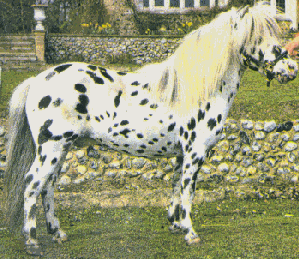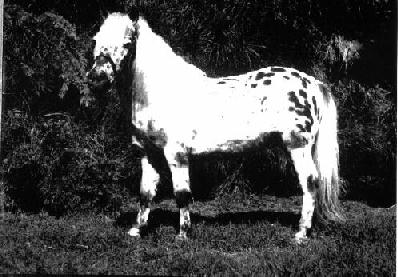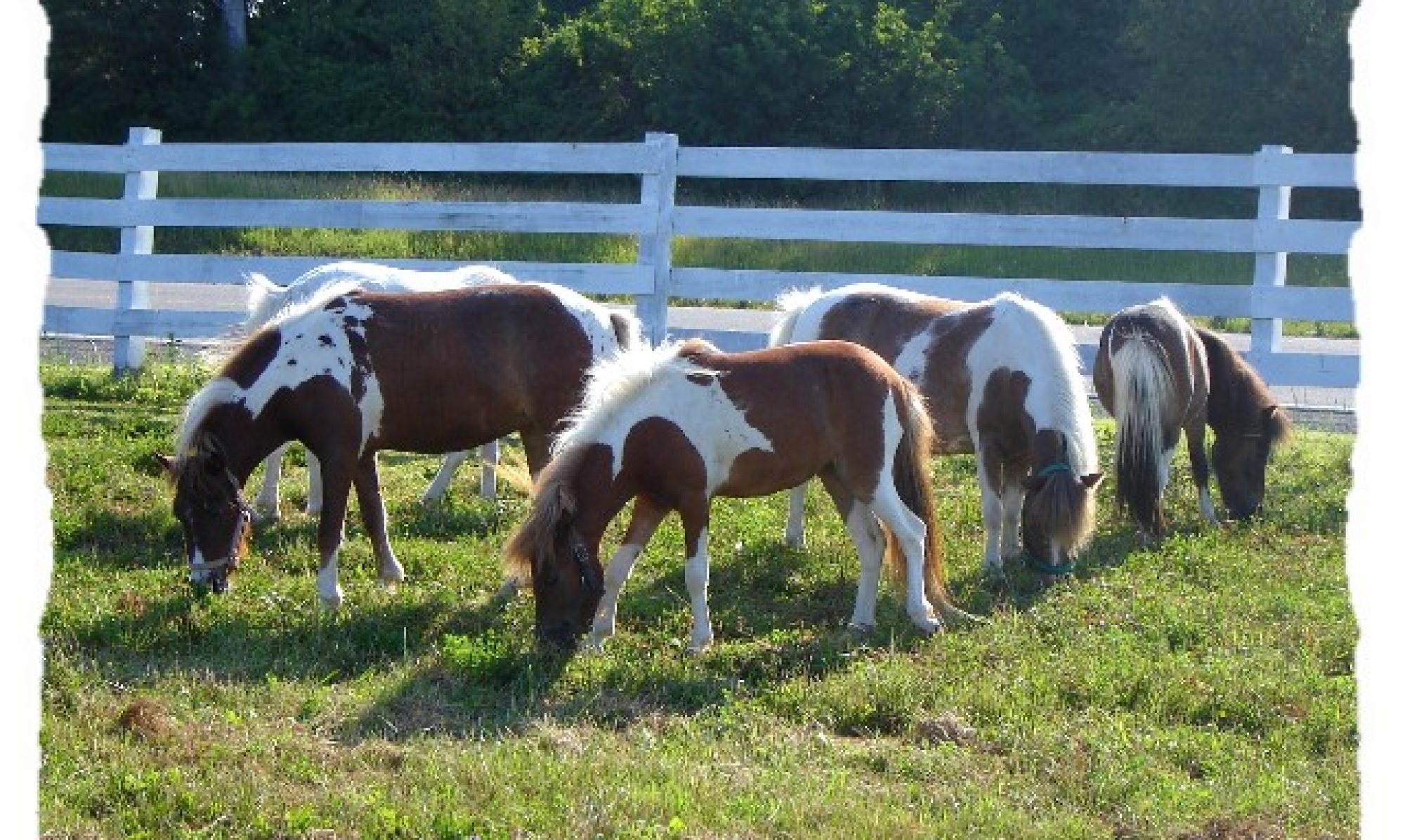History of the Falabella Breed
The Falabella family of Argentina became interested over a century ago in the research and breeding of miniature horses. Patrick Newell (the great grandfather of Julio Caesar Falabella) first started the breeding of the miniature horses back in the late 1800’s. The plan was to develop an equine the size of pony, but with the conformation and disposition of a horse.
The knowledge of breeding for miniature horses was recorded and passed from Patrick to his son-in-law Juan Falabella, who in turn passed the program onto his son Emilo Falabella, and then onto his son Julio Falabella. Thus began the breeding of Falabella horses. Today the Falabella is recognized as a Breed and known as the true original miniature horse.
The family selectively chose the horses for breeding by using the smallest mares with the smallest stallions, thus resulting in each generation becoming smaller. Breeding programs continue today producing many horses under 30 inches.
A favorite of the Falabella family was a stallion born short and stocky named Napoleon who matured at only 27 inches and weighed one hundred pounds. The name Napoleon appears in many pedigrees today. This horse lived to a ripe old age of 42 and upon his death, a monument was erected in his honor on the Falabella Ranch. At the time of his death, he was claimed to be the oldest living horse in the world.
Falabellas have been bred down from a variety of full size horse breeds including the Thoroughbred, Arabian, Quarter Horse, Mustang, Draft ,etc. Falabellas appear in many colours: solids blacks, bays, buckskins, palominos, chestnuts, pintos and appaloosas.

Julio Falabella especially liked the loud coloured horses and many of his herd descendants today are appaloosa and pinto. One of Julio’s favorites was an appaloosa stallion named Menelek who was sold to Lord and Lady Fisher of England. Menelek was the foundation used to start a Falabella bloodline in the United Kingdom and the Kilverstone Zoo was established to promote the breed.
Since a variety of breeds were used, the conformation varies from the very fine Arabian/thoroughbred body to the heavier quarter/draft horse type. However, all should have good conformation with the body in proportion, straight legs, and resemble a true horse.
The disposition of the Falabella is quite noticeable, they are very friendly, extremely gentle and very intelligent. They make great performance horses and can be easily trained as driving horses, show horses, or trick horses.
The first Falabellas were imported to the United States by the Regina Winery in Etiwanda, California. A team of Falabella horses was used as promotion to pull a stagecoach in parades bearing the Winery’s crest.

The Regina Winery imported the first Pure Falabella stallion into the United States. This magnificent leopard appaloosa stallion named Chianti became one of the most famous appy stallions in the country; and his name appears in the pedigrees of many miniature horses today.
In 1980, Julio Caesar Falabella passed away and the herd and ranches were divided between Maria Luisa, his second wife, and his only daughter Maria Angelica. Maria Luisa continues to breed horses in South America and exports to other countries.
In 1995, Maria Angelica Falabella and her business partner Washington Sea and his family relocated to South Carolina, USA. Today they continue her father’s breeding program and show their horses in the United States. Angelica still owns horses in Argentina and continues to bring them to America.
Thanks to Angelica Falabella and Sandy Hawkins for the information in this history of the Falabella horses.

